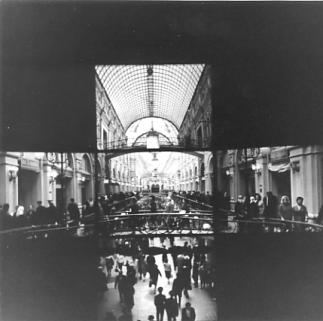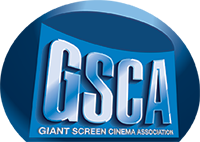Labyrinth, created as a multi-screen presentation for Expo ’67 in Montreal, was a presentation without commentary in which multiple images–sometimes complementary, sometimes contrasting–drew the viewer through the different stages of a labyrinth. The images moved from great joy to wrenching sorrow, from stark simplicity to ceremonial pomp. It represented life as it is lived by the people of the world, each one, as the images suggest, in a personal labyrinth. This gigantic audiovisual presentation, with 35mm and 70mm images projected onto multiple screens, became the precursor to the IMAX format.
In 1972 the images were transferred to 15/70 and released in two different versions, both of which screened at the Ontario Place Cinesphere, the world’s first permanent IMAX theater. A 14-minute version of Chamber III of the Labyrinth presentation was screened at the Cinesphere under the title Labryinth III during the summer of 1972. A 21-minute version, which included seven minutes of Chamber I and 14 minutes of Chamber III, was screened at the Cinesphere under the title Labyrinth IV later that same year.
Length: 1:20:00
Film Details
- Year Released: 1972
- Date Released: 1972
- Alternate Titles:
- Status: Inactive
- 3D: No
- Run Time: >50
- Formats: 15/70
- Distributor:
- Produced By:
- Executive Producer: Desmond Dew
- Producer: Tom Daily, Desmond Dew, Roman Kroitor
- Director: Roman Kroitor, Colin Low, Hugh O'Connor
- Associate Producer:
- Writer:
- Cinematography: V. V. Dombrovsky, Georges Dufaux, Gilles Gascon, Alex Krasnov, Walter Lassally, Michel Thomas-d'Hoste
- Sound Editor:
- Visual Effects:
- Music/Score: Eldon Rathburn
- Editor: Tom Daly
- Narrator:
- Other Credits:
- Sponsors:
Genre
- Animation
- Short
Website
Awards
Film Facts

